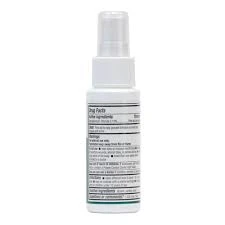Safety Data Sheet Overview for Poly Aluminum Chloride Chemical Properties and Handling Guidelines
Understanding the Safety Data Sheet (SDS) for Poly Aluminum Chloride
Poly Aluminum Chloride (PAC) is a widely utilized coagulant in water treatment processes, renowned for its effectiveness in clarifying drinking water, wastewater, and industrial effluents. As with any chemical substance, it is essential to understand its properties, safety measures, handling procedures, and environmental impact, which can be found in its Safety Data Sheet (SDS). This article aims to provide an overview of the key details one can expect to find in the SDS for Poly Aluminum Chloride.
Chemical Identification
The SDS begins with identification details, including the chemical name, CAS number (which is 1327-41-9 for PAC), and its chemical formula. PAC is commonly found in powder or liquid form and appears as a yellow-brown color, depending on its specific formulation. Understanding the chemical's identity helps in verifying its appropriateness for particular applications in water treatment and mitigating any potential hazards.
Hazards Identification
A crucial section of the SDS is the hazards identification. PAC is generally classified as a non-hazardous substance; however, it can cause irritation upon contact with skin, eyes, or respiratory tract. The SDS categorizes these hazards, helping users recognize the potential risks involved in handling PAC. For instance, while inhalation of the product’s dust can be harmful, the impact under normal handling conditions is minimal.
Composition and Ingredients
The SDS provides detailed information about the composition and any pertinent ingredients within the product. For PAC, this often includes information about its aluminum content, which typically ranges between 10-13% by weight. Understanding the specific composition is critical for users who must comply with regulatory standards and assess compatibility with other substances.
First Aid Measures
In case of exposure, the SDS outlines the first aid measures to be taken. For skin contact, it advises washing the affected area thoroughly with soap and water. If ingested, it recommends seeking medical advice or assistance. Eye contact requires immediate irrigation with water for at least 15 minutes. These guidelines are vital for ensuring the safety of personnel handling the chemical and help mitigate the severity of potential incidents.
poly aluminum chloride sds

Fire-Fighting Measures
While PAC itself is not considered flammable, the SDS includes recommendations for fire-fighting measures in case of surrounding fires. It suggests using appropriate extinguishing media (such as water spray or foam) and urges personnel to wear self-contained breathing apparatus (SCBA) when fighting chemical fires. This information is crucial for emergency responders during a crisis.
Handling and Storage
The SDS outlines important instructions on handling and storage practices. PAC should be stored in a cool, dry place, away from incompatible materials (e.g., strong oxidizers). It emphasizes the importance of using personal protective equipment (PPE) such as gloves and goggles when handling the material to minimize exposure risks. This section is particularly important for organizations looking to implement best practices for safety and compliance.
Exposure Controls and Personal Protection
To ensure optimal safety, the SDS provides information on exposure limits and specific personal protective measures. For PAC, the permissible exposure limits (PEL) and threshold limit values (TLV) are generally established by regulatory bodies. Additionally, recommendations for ventilation, such as ensuring adequate airflow in storage and usage areas, are included to prevent airborne particulate accumulation. Employees are advised to utilize proper PPE to reduce the risk of exposure.
Ecological Information
The ecological impact of PAC is also addressed within the SDS. Typically, PAC is regarded as safe for the environment when used as directed, with minimal adverse effects reported on aquatic life. However, the SDS will caution against excessive discharge into waterways, as clogging and sedimentation may pose risks to aquatic ecosystems. Responsible usage and disposal methods should always be adhered to.
Conclusion
In summary, the Safety Data Sheet for Poly Aluminum Chloride is an invaluable resource for anyone involved in its handling, usage, or disposal. It contains essential information about the chemical’s properties, potential hazards, and recommended safety practices. By adhering to the guidelines outlined in the SDS, organizations can ensure the safe and efficient use of PAC in various applications while minimizing risks to human health and the environment. Understanding and carefully following the information provided in the SDS is fundamental to promoting safety and compliance in chemical management.
-
LK-319 Special Scale And Corrosion Inhibitor For Steel Plants: Advanced Solutions for Industrial Water SystemsNewsAug.22,2025
-
Flocculant Water Treatment: Essential Chemical Solutions for Purification ProcessesNewsAug.22,2025
-
Isothiazolinones: Versatile Microbial Control Agents for Industrial and Consumer ApplicationsNewsAug.22,2025
-
Scale Inhibitor: Key Solutions for Water System Scale PreventionNewsAug.22,2025
-
Organophosphonates: Versatile Scale Inhibitors for Industrial Water SystemsNewsAug.22,2025
-
Scale and Corrosion Inhibitor: Essential Chemical Solutions for Water System MaintenanceNewsAug.22,2025





